- Home
- William Shakespeare
King John & Henry VIII Page 34
King John & Henry VIII Read online
Page 34
John Thaw, fresh from his TV success in The Sweeney, played the part in Davies’s production. His performance was not to everyone’s taste: “John Thaw played Wolsey much in the role of a shopkeeper. Even in the lines where his downfall causes him to reject worldly ambition, you feel it wouldn’t take much for him to open his shop elsewhere.”177 Ned Chaillot, however, argued that, “With Mr. Griffiths going lightly from strength to strength, there is room for a touch of the tragic in the characters of Wolsey and Katherine, and John Thaw’s Wolsey achieves the tragic in realizing how ill he has served his God.”178
Ian Hogg, Wolsey in Doran’s production, discussed the play in an interview with the Birmingham Post:
On the rare occasions [the play] is done it tends to be very highly dressed up, because people doubt the power of the text. But Greg Doran, who is directing this production, has relied a lot on the speed of the words, which moves it at a great lick. If you weigh it down with big scene changes you lose that momentum.179
9. 1983, Howard Davies production. John Thaw as Cardinal Wolsey “achieves the tragic in realizing how ill he has served his God.”
Michael Billington saw him as “a chunky Ipswich over-achiever with a cottage-loaf face who undergoes genuine repentance,”180 and Naomi Koppel in the Evening Standard thought that “Ian Hogg steals the show as Cardinal Wolsey, charting the rise and fall of the butcher’s son from Ipswich who cannot quite rid himself of his accent.”181
In all three productions, the three leads were strongly played and well-balanced. Each production also featured outstanding performances in lesser roles.
Richard Pascoe played Buckingham in 1969. Philip Hope-Wallace argued that he delivered his “great speech of farewell to life … as well as I have heard it.”182 Emrys Jones’s Cranmer in the same production brought “a hang-dog charm to the part of Cranmer—his hectic football game with the boys while awaiting questioning by the council is a masterstroke.”183
Queen Anne is a small part without a great deal of scope but in 1969, “Janet Key made Anne Bullen radiantly beautiful, which is about all the part allows.”184 Davies had given the prologue to Henry to deliver and to balance out the proceedings, gave Sarah Berger as Anne the Epilogue. He also made the “Old Lady” younger and added a bevy of other young women in Act 2 Scene 3. Claire Marchionne in Doran’s production made her seem less than demure in the masque at Wolsey’s and brought her on at the end, where she put her hand to her neck, presumably to serve as a visual reminder of her ultimate fate. Cherry Morris’s Old Lady in 1996 was Welsh (as one reviewer commented, there were a lot of accents in this production) and her performance was singled out for its vitality:
as the Old Lady, Cherry Morris is brimful of sheer human essence. By some strange fluke, Shakespeare is at his best in the few lines he gives to this minor character. Listening to her, we are keenly alive in the moment as nowhere else in the play.185
The Chamberlain does not generally get a mention, but Guy Henry’s performance in 1996 was picked out by a number of critics for the sophistication and clarity he brought to the part: “There is plenty of wry humour, particularly in Guy Henry’s Lord Chamberlain, and also in Cherry Morris’s down-to-earth Welsh lady-in-waiting.”186 Perhaps in recognition of their presence onstage as assets, Doran used Guy Henry to speak the Prologue and Morris in place of the Third Gentleman, enlivening the scene while commenting on events such as Anne’s coronation.
Conclusion
Originating perhaps as an occasional play for the wedding celebrations of James I’s daughter Elizabeth, Henry VIII was immensely popular, especially for the celebration of royal occasions, until the twentieth century, when, rather than being played on its intrinsic dramatic merit, it seems frequently to have been relegated to the status of a “festival play” and revived out of a sense of duty. All three RSC productions, though, have proved successful, if controversial, demonstrating that in the right hands it’s still a play with real theatrical virtues:
Truth to life is at once the problem and the fascination of Henry VIII. This play is a controlled and possibly cynical experiment. It may not be artistically great, but it is artistically interesting. Its structure and resolution may be “flawed” by ambivalence, divorce, and disjunction, but … these “flaws” are patterned and full of meaning, controlled and deliberate. They comment on human truth and art, explaining how literally, objectively true to life great art can be.187
THE DIRECTOR’S CUT: INTERVIEWS WITH GREGORY DORAN AND GREGORY THOMPSON
Gregory Doran, born in 1958, studied at Bristol University and the Bristol Old Vic theater school. He began his career as an actor, before becoming associate director at the Nottingham Playhouse. He played some minor roles in the RSC ensemble before directing for the company, first as a freelance, then as associate and subsequently chief associate director. His productions, several of which have starred his partner Antony Sher, are characterized by extreme intelligence and lucidity. He has made a particular mark with several of Shakespeare’s lesser-known plays, including Henry VIII in the Swan Theatre in 1996, which he’s discussing here, and King John in 2001, as well as highly acclaimed revivals of works by other contemporary Elizabethan and Jacobean writers.
Gregory Thompson was born in Sheffield and studied mathematics and philosophy at the London School of Economics, before training at Sheffield Youth theater, the National Theatre Studio and Theatre de Complicite. In 1998 he founded AandBC Theatre Company to create touring productions of classical and new drama. These included many productions for Lincoln’s Inn Fields and Somerset House in London. Other productions include Mahabharata, The Winter’s Tale, The Rape of Lucrece, and The Tale That Wags the Dog (a storytelling show about the relationships between men and women). He won a Young Vic’s Jerwood Director’s Award in 2006 and was named Best Director at the 2006 Critics’ Awards for Theatre in Scotland for his production of Brian Friel’s Molly Sweeney at Glasgow Citizens’ Theatre. From 2006 to 2007 Gregory was director of Glasgow’s Tron theater. Here he’s discussing AandBC’s production of Henry VIII, commissioned by the RSC as part of the 2006 Complete Works Festival and performed in the iconic setting of Holy Trinity Church, Stratford-upon-Avon.
Henry VIII was seen traditionally as a great patriotic celebration and was often staged on the occasion of royal coronations; do you think perceptions of the play have changed and might that account for its relative lack of popularity today?
Doran: Howard Davies tells a story about when he directed the play [in 1983]. There was a meeting in which all the plays were being divvied up for the following year and he went out to the toilet. When he came back he discovered that he was directing Henry VIII! When Adrian Noble offered it to me in 1996 various people suggested that it was a poisoned chalice and that it was the one Shakespeare play that doesn’t work. I knew that it had been an excuse for a lot of pageantry, that there had been great productions which had staged not only the execution of the Duke of Buckingham but also his journey to the tower by barge, with whole streets of cheering crowds following the coronation of Queen Anne, and spectacular flights of angels for the dream of Queen Katherine.
When you do plays at Stratford you are always aware of previous productions. I had seen that Howard Davies production with Richard Griffiths (Henry), John Thaw (Wolsey), and Gemma Jones (Katherine) and was fascinated by how they had eschewed that pageantry. I remember that the coronation of Queen Anne was a sort of rehearsal: they had dummies dressed up as the various people and they read the stage directions out loud as dialogue. I shared their sense that pageantry had swamped previous productions of the play. It was my first Shakespeare for the RSC and it was a play and a period that I researched a lot. A very significant point about the pageantry is that it is political propaganda. Right at the beginning of the play the Duke of Norfolk describes the Field of the Cloth of Gold: how the French were “All clinquant, all in gold” and what a spectacular affair it was. But as Buckingham says, it’s “like a glass, / Did break i’th’wrenchi
ng”: in other words they had spent an awful lot of money on a Tudor policy of magnificence, and that magnificence was deliberately designed to display wealth and power.
That first scene seems to suggest that the point of the play is in part to demonstrate the hollowness of that policy of propaganda. I began to look at the play from a political perspective in overall terms, but also and particularly at how the pageantry was part of a policy of magnificence. The play also sweeps from the epic to the intimate in a very specific way. My designer, Rob Jones, and I both realized quite quickly that the Swan Theatre itself was going to help us to solve this problem, in that we could present some spectacular pageantry but then lock it away and become intimate.
10. 1996, Gregory Doran production. “[T]he pageantry was part of a policy of magnificence. The play also sweeps from the epic to the intimate in a very specific way.”
Thompson: I think one of the problems with the play is that it is seen as a great patriotic celebration and without care the pageantry can obscure what story there is. The play deals with a tricky piece of our history: Henry VIII was a ruthless tyrant and, in the last fifteen years of his reign, an unstable capricious despot. In many ways the play is about how dangerous it is to be in the court of a tyrant.
Much of the impact of the play has been lost, of course, because for the most part the modern audience no longer has sufficient knowledge of Tudor politics to be aware of the absences and omissions of people and events. Even so, we still recognize today that in the play there is only a hint of Henry’s desperation for an heir; no real debate about the legality of his marriage to Katherine; no mention of him becoming Supreme Head of the English Church; four of his wives are missing and no wives are beheaded.
I think the relative lack of popularity of the play is due to its episodic nature and lack of narrative drive. It’s not Hamlet. Henry has only a few decisions to make: to judge the veracity of Buckingham’s surveyor, to remove Wolsey for feathering his own nest, to legitimize his attraction for Anne Bullen and to select and protect Cranmer. None of them are particularly difficult.
Unsurprisingly for a play written when the divine right of kings was a hot issue there is little criticism of the king in the text, saving a hint that his interest in Anne Bullen is merely sexual, but for a play regarded by some as a great patriotic celebration there isn’t much praise for Henry either. The play illustrates the trick used by rulers and governments for centuries: pageantry disguises that it’s dangerous at court.
Early performances seem to have used the subtitle All Is True; were you tempted by this strategy and would it make a difference to perceptions about the play?
Doran: I am entirely convinced that the play is called All Is True. Henry Wotton’s letter about the burning down of the Globe says that the King’s Men were performing a play called All Is True, so it seems to me to be the proper title. But it also hints at those rather enigmatic Shakespearean titles like All’s Well That Ends Well, As You Like It, or What You Will. It struck me that the title is a bit like a comedian saying, “this is an absolutely true story”: the more the comedian emphasizes the truth of his tale, the more you question its veracity. I think the title comes with suspicion attached to it, in the same way that All’s Well That Ends Well always seems to me to require a question mark at the end of the title.
We took it a stage further and had in the designer Rob Jones’s set two huge doors, which opened to reveal the Field of the Cloth of Gold at the beginning. When they closed at the end of that piece of pageantry, you saw emblazoned in gold letters across these doors the words “All Is True.” It kept in mind a sense that there was an agenda attached to this dramatization. Was it all true? Can you be true? What is the historical fact? Is there a whitewash job going on? Is this a political gesture to rehabilitate Katherine of Aragon?
One has to remember that Shakespeare had already treated this subject, or at least been part of a collaboration on this very period of history, when he wrote Thomas More. The manuscript of that play suggests it’s in five different hands and it may therefore be that he was only one collaborator of many in that play, but in the reign of Queen Elizabeth that was an extremely subversive subject to discuss, a regular hot potato. In a way Thomas More canonizes the man who had refused the right of Henry to divorce Katherine, and therefore the right of the present Queen—the daughter of Anne Bullen—to reign. To write a play about that and put it on the stage during Elizabeth’s reign was an extraordinary thing to do. Coming back to that same period in history at the end of his career suggests that there was business Shakespeare felt he had left unattended. We blazoned “All Is True” on the walls to suggest to the audience that they had to keep a question mark in their minds.
Thompson: The RSC used Henry VIII, which is a sensible marketing decision as it is how the play is known. All Is True is a great title, though, as one of the driving ideas in the play is that in the court all is true. “All Is true” in the court in the sense that whatever is the current appearance, fashion or policy is taken to be the true and eternal will of the king. Of course, when there is a change in appearance, fashion, or policy then the new situation becomes the true and eternal will of the king. We see Anne shift from lady-in-waiting to heaven-sent queen and then go missing. We know that she becomes the whore that bewitched a king.
When all is true, words cannot be trusted. The members of the court survive and thrive through favor and position as all the power is concentrated in and flows through the king. Words are used to curry favor and maintain position and, as so often with strong government, the first casualty is the truth.
Speaking truth to power is, of course, a Shakespearean theme and the play begs the question: who will speak the truth to the king? The play opens with Norfolk and Buckingham complaining about Wolsey’s ambitious schemes and Norfolk warns Buckingham to be careful about telling Henry the truth. Wolsey sees to it that Buckingham doesn’t live long enough to influence Henry.
It is a rare person who speaks truth to power. Even the Lady who brings news of the birth of Elizabeth initially tells Henry that the baby is a boy. Katherine uses her position as queen to expose Wolsey’s tax gathering and to question the reliability of Buckingham’s surveyor as a witness against Buckingham. Cranmer is the only one who fears nothing that can be said against him when pressed by the king.
In Act 3 Scene 1 Katherine refuses to accept Wolsey’s scheme for a divorce: she holds fast to the truth, particularly the truth that she is lawfully married to Henry. In Act 3 Scene 2 Wolsey’s corruption is exposed and he tells Cromwell to fling away ambition. These two juxtaposed scenes, one where someone holds fast to what she believes to be true and one where someone discards all that is false, were what attracted me to the play.
There are more occurrences (twenty-one) of the word “truth” in Henry VIII than in any other Shakespeare play. (All’s Well That Ends Well has eighteen; Henry IV Part Two has sixteen.) The Chorus immediately muddies the water though:
… Such as give
Their money out of hope they may believe,
May here find truth too.
Hope and belief are not usual signs of truth. The Chorus goes on to make clear that what is being shown has been selected and is a partial view:
… For, gentle hearers, know
To rank our chosen truth with such a show
As fool and fight is, beside forfeiting
Our own brains, and the opinion that we bring
To make that only true we now intend,
Will leave us never an understanding friend.
There has been much criticism of the episodic nature of the plot; was it a problem to find a narrative line or did you detect a more subtle shaping of material in the play in the way it juxtaposes contrasting scenes, moods, and characters?
Doran: I deliberately did not try to solve all the problems of the play before we went into rehearsal, but to see how the play unfurled itself during that process. It inevitably has an episodic quality, but then so does hist
ory. To begin with I thought that the potential downfall of Cranmer was one episode too many and felt that I should cut Cranmer from the story. But as we rehearsed and grew to know the play, it seemed to me that it is a learning process for Henry himself: he learns how to trust and who to trust. He trusts Wolsey and then the lords gang up against Wolsey, conspire against him, and bring about his downfall. The lords also conspire against Cranmer, and yet this time Henry, knowing Cranmer to be a good man, gives him his support and his blessing. There is an arc to the story in terms of Henry VIII himself learning how to deal with the people around him. The structure of the play emerged by us allowing it to emerge.
Thompson: The narrative line isn’t obvious and there are some delicious juxtapositions. The theater is all about juxtaposition and this play delivers, including: a celebration followed by an execution; the elevation of a lady-in-waiting followed by the trial of a queen; a man of lies followed by a woman of truth; and the coronation of a new queen followed by the death of an old one.
However, there are always two questions to begin with when directing a play: what kind of play is it? And what’s the story?
Henry VIII is clearly a history play. One might call it a docudrama. It deals with events over twenty or so years in the middle of Henry’s reign from the Field of the Cloth of Gold in 1520 to the birth of Elizabeth in 1533 and Cranmer’s political struggles in 1535.
It shows both the public and private lives of the court and we took a decision to have Henry in various states of dress and undress: from his golden and white state outfits recognizable from the iconography to having him entering court in his hunting dress and struggling with his conscience in his nightgown.
The trickier question with this play is: what’s the story? The first four acts deal with exits: the trial and death of Buckingham, the fall of Wolsey, the divorce and death of Katherine, and the disappearance of Anne Bullen after the coronation. These leavings are balanced with the wooing and elevation of Anne Bullen to Queen of England, the identification, promotion, and protection of Cranmer, the birth of Elizabeth and the prophecy of her great reign and the one who will come after.

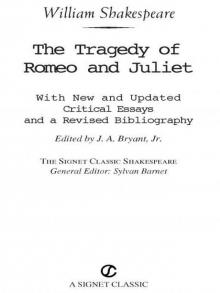 Romeo and Juliet
Romeo and Juliet As You Like It (Folger Shakespeare Library)
As You Like It (Folger Shakespeare Library)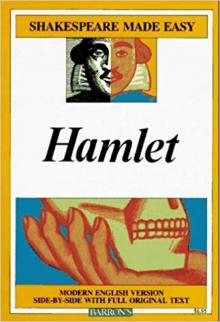 Hamlet
Hamlet Richard II (Folger Shakespeare Library)
Richard II (Folger Shakespeare Library)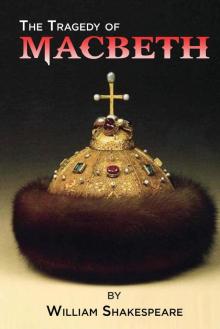 Macbeth
Macbeth Henry V
Henry V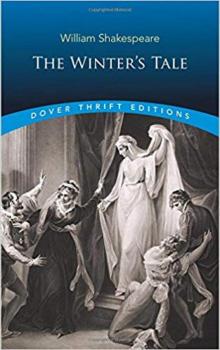 The Winter's Tale
The Winter's Tale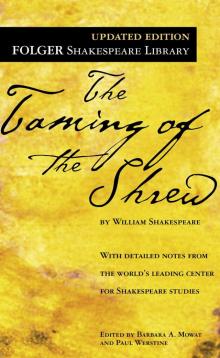 The Taming of the Shrew
The Taming of the Shrew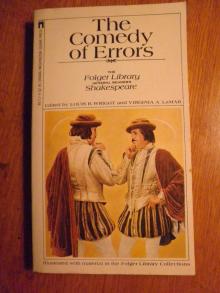 The Comedy of Errors
The Comedy of Errors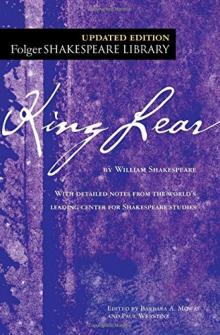 King Lear (Folger Shakespeare Library)
King Lear (Folger Shakespeare Library)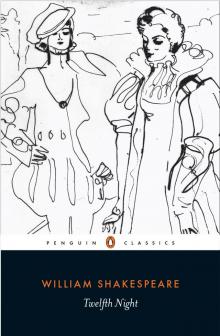 Twelfth Night
Twelfth Night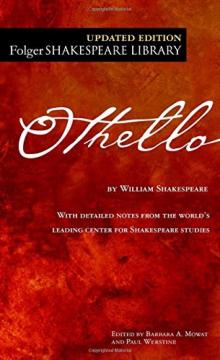 Othello
Othello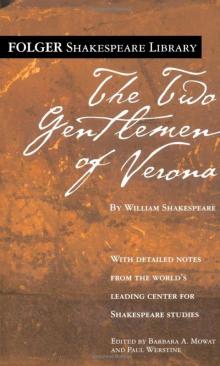 The Two Gentlemen of Verona
The Two Gentlemen of Verona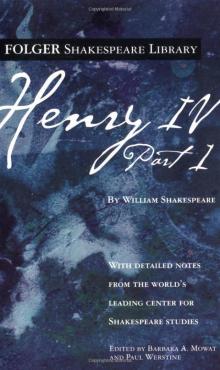 Henry IV, Part 1 (Folger Shakespeare Library)
Henry IV, Part 1 (Folger Shakespeare Library) King John/Henry VIII (Signet Classics)
King John/Henry VIII (Signet Classics)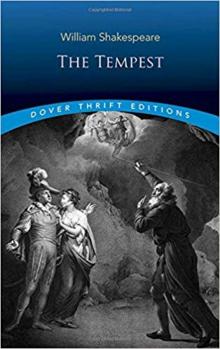 The Tempest
The Tempest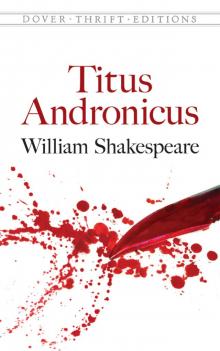 Titus Andronicus (Dover Publications)
Titus Andronicus (Dover Publications)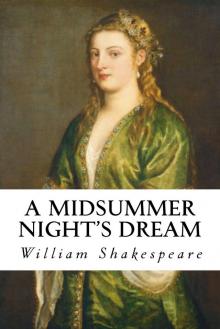 A Midsummer Night's Dream
A Midsummer Night's Dream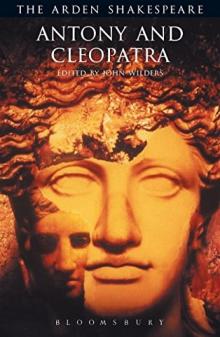 Antony and Cleopatra (Arden Shakespeare: Third Series)
Antony and Cleopatra (Arden Shakespeare: Third Series)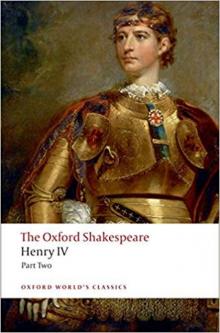 The Oxford Shakespeare: Henry IV, Part 2 (Oxford World's Classics)
The Oxford Shakespeare: Henry IV, Part 2 (Oxford World's Classics)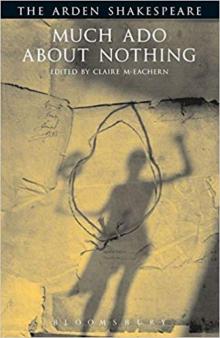 Much Ado About Nothing (Arden Shakespeare: Third Series)
Much Ado About Nothing (Arden Shakespeare: Third Series)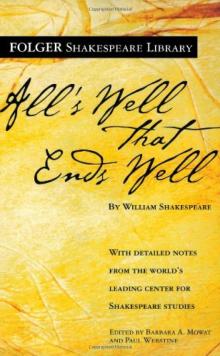 All's Well That Ends Well
All's Well That Ends Well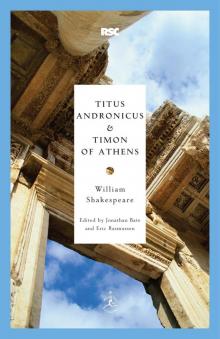 Titus Andronicus & Timon of Athens
Titus Andronicus & Timon of Athens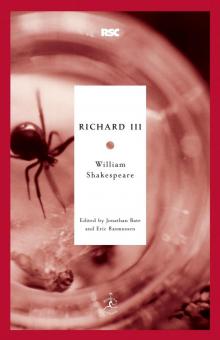 Richard III (Modern Library Classics)
Richard III (Modern Library Classics) Coriolanus
Coriolanus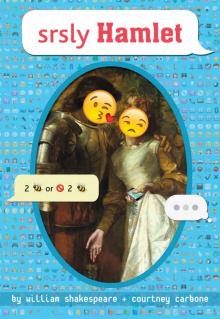 srsly Hamlet (OMG Shakespeare)
srsly Hamlet (OMG Shakespeare) The Merchant of Venice
The Merchant of Venice Richard III
Richard III Richard II
Richard II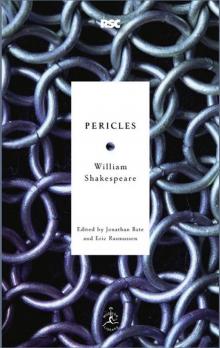 Pericles
Pericles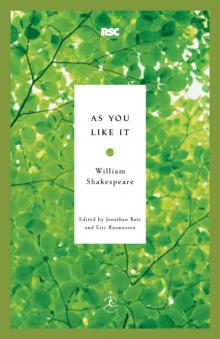 As You Like It
As You Like It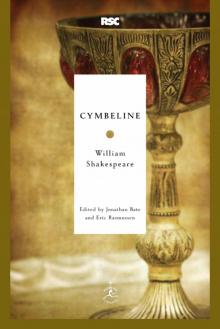 Cymbeline
Cymbeline Alls Wel that ends Well
Alls Wel that ends Well YOLO Juliet
YOLO Juliet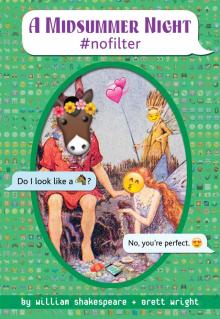 A Midsummer Night #nofilter
A Midsummer Night #nofilter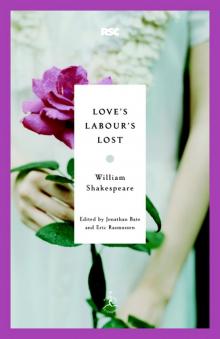 Love's Labour's Lost
Love's Labour's Lost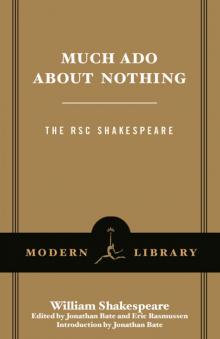 Much Ado About Nothing
Much Ado About Nothing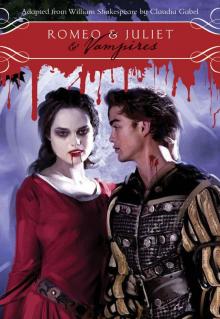 Romeo & Juliet & Vampires
Romeo & Juliet & Vampires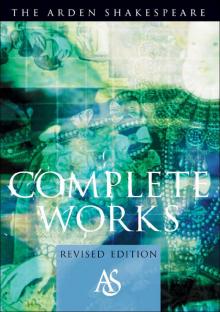 The Arden Shakespeare Complete Works
The Arden Shakespeare Complete Works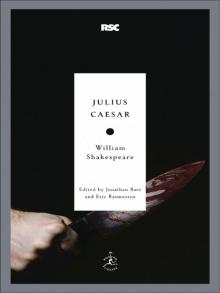 Julius Caesar
Julius Caesar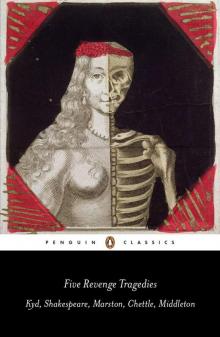 Five Revenge Tragedies: The Spanish Tragedy, Hamlet, Antonio's Revenge, The Tragedy of Hoffman, The Revenger's Tragedy (Penguin Classics)
Five Revenge Tragedies: The Spanish Tragedy, Hamlet, Antonio's Revenge, The Tragedy of Hoffman, The Revenger's Tragedy (Penguin Classics)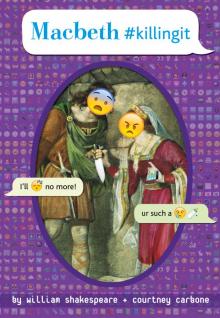 Macbeth #killingit
Macbeth #killingit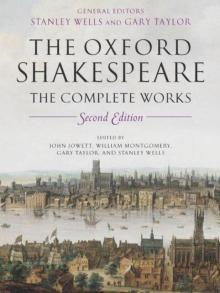 The Oxford Shakespeare: The Complete Works
The Oxford Shakespeare: The Complete Works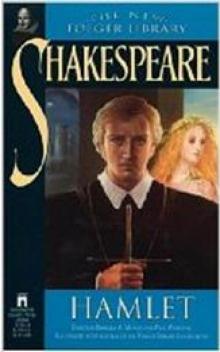 Hamlet, Prince of Denmark (Collins edition)
Hamlet, Prince of Denmark (Collins edition)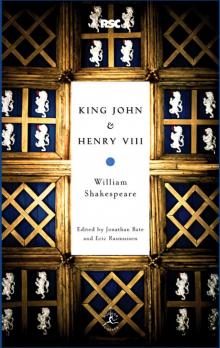 King John & Henry VIII
King John & Henry VIII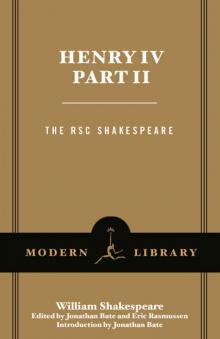 Henry IV, Part 2
Henry IV, Part 2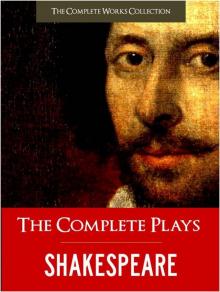 Complete Plays, The
Complete Plays, The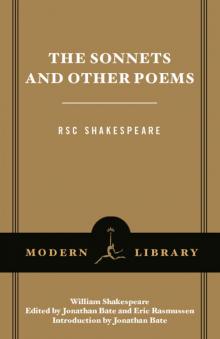 The Sonnets and Other Poems
The Sonnets and Other Poems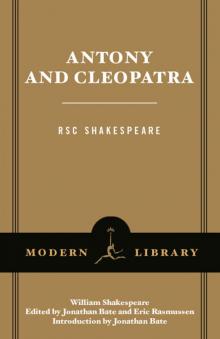 Antony and Cleopatra
Antony and Cleopatra Henry IV, Part 1
Henry IV, Part 1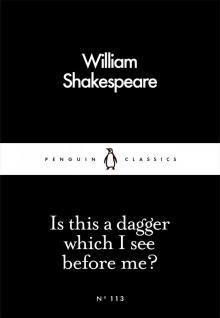 Is This a Dagger Which I See Before Me?
Is This a Dagger Which I See Before Me? The Complete Works of William Shakespeare In Plain and Simple English (Translated)
The Complete Works of William Shakespeare In Plain and Simple English (Translated)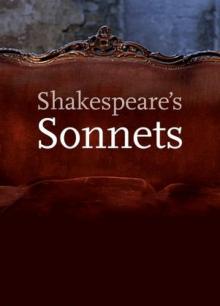 The Sonnets
The Sonnets